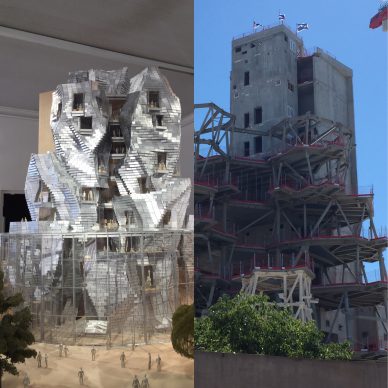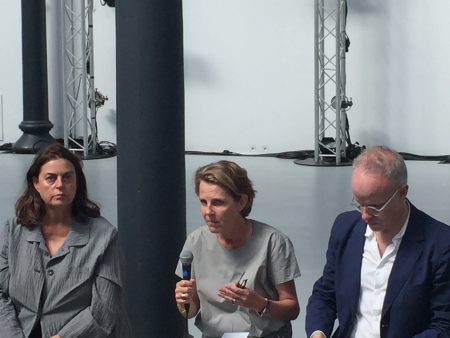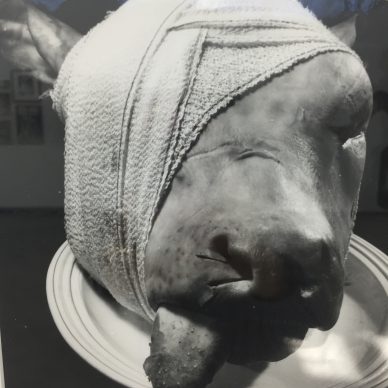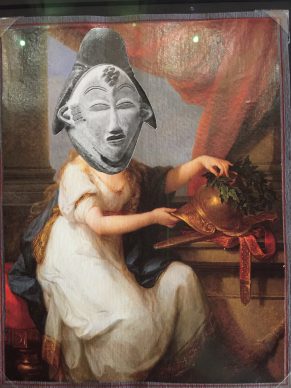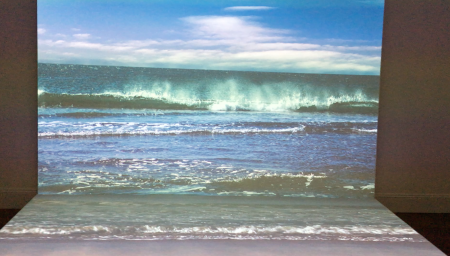The Rencontres d’Arles photography festival stages forty exhibitions dotted around the small Provençal city best known as the place where Vincent Van Gogh cut off a small piece of his ear.
But let’s leave Van Gogh to one side today, even if the brand new foundation named after him is currently showing around twenty of his paintings in the city. We’d dreamed of his paintings by l’allée des Alyscamps and the Pont de Trinquetaille, and here his canvases being shown on the premises of the hospital where he convalesced after that famous self-mutilation, now turned into a foundation.
No, let’s turn our attention instead to an event launched in 1970 and which has become an institution for photographer-photographers (as opposed to artist-photographers) from all over the world.
As the famous french singer Leo Ferré once sang, as time passes, everything passes,( avec le temps va tout s’en va) and these days the Rencontres d’Arles explores conceptual paths, artistic paths, documentary, video, but also photography pure and simple. That’s what one call post-modernism.
This is a roundabout way of saying that these days you’ll find both the brilliant and the the insufferably dull coexisting at this festival in Arles that runs until September and which is usually negotiated under the blistering sun.
There’s almost too much on offer unless you have the stamina of a long-distance runner.
So if you’re passing through this most beautiful corner of the south of France, let me ease your suffering and round up some of my personal highlights from the festival.
If there is one place you should visit as a matter of principle at the Recontres, it’s the former SNCF workshops.
Besides hosting the photography festival, they will be the home of the LUMA Foundation, which opens in summer 2018 by the famous Swiss collector Maja Hoffmann who, it should be added, spent her childhood in the Camargue, the region of which Arles is the capital.
The 56-metre-tall tower designed by Frank Gehry is rapidly being erected, as is a refurbished structure that is already hosting an array of expertly staged exhibitions around contemporary image. Hans Ulrich Obrist, the global specialist on contemporary art and the artistic director of the Serpentine Gallery in London as well as a member of the committee presiding over the destiny of the ambitious LUMA Foundation, describes the process put in place to create exhibitions as archipelagoes rather than a continent.
He cites his favourite author Edouard Glissant (Really? You’ve never read Edouard Glissant? Nor have I, not properly. It’s not easy reading. But HUO says that he takes great delight in some of his sentences, providing daily inspiration). The installation by the architect Philippe Rahm which is designed like a labyrinth is seductive but it would benefit from having the artwork labels a bit closer so you can work out who did what.
Don’t miss the enigmatic images of women by the American Collier Schorr (born 1963) who is a renowned fashion photographer. They’re displayed near to those of another American artist, Anne Collier (born 1970) as if the two of them had conspired in a little in-joke.
Another must-see, in a different building, is the immensely poetic projection by William Kentridge (born in 1955), the South African artist who here combines shadow puppets with videos of assorted figures in a procession. The work is part of the Maja Hoffmann collection.
The most hilarious exhibition at Rencontres d’Arles brings together photos from the French satirical magazine Hara Kiri between 1960 and 1985. In the great art of parody, all morals are trampled underfoot. Sexist photos, photos that encourage alcohol abuse, salaciousness and greed, not to mention all manner of general insults, it’s what we term ‘le bon gout français’ and it’s a wondrous thing to behold.
Next to these, the images from Toilet Paper magazine by the trendy Italian artist Maurizio Cattelan and his accomplice Pierpaolo Ferrari pale in comparison. Think saturated colours and cliché subjects – it’s been seen too much now.
But we hear that Cattelan will return to work in earnest after his botched comeback at the Guggenheim recently (with solid gold toilets that were never exhibited). In October he’ll be showing in the noteworthy new space for contemporary art in Paris, La Monnaie. What will he be showing? It’s not clear but it’s supposed to be big.
What Rencontres d’Arles does well is segue seamlessly from one style to another.
Over the years the French filmmaker Sebastien Lifshitz has collected anonymous photos of men dressed as women and women dressed as men. ‘Mauvais Genre’ is a remarkable exhibition about the little stories that come to mind when observing photos of unknowns taken by unknowns.
Equally political, Spain’s Laia Abril (born in 1986) presents her first chapter in a great history of misogyny – the subject on this occasion is abortion. At once documentary and art, this stylised accumulation of information on pregnancy termination deals with religion, sex, taboos, charlatans and suffering. It’s impressive stuff.
Finally the real small jewel at this festival is located not far from the old SNCF workshops in a disused church: the chapelle de la charité. Here we find photomontages by Maud Sulter (1960-2007), the fine artist and photographer born to a Ghanaian father and Scottish mother. She juxtaposes African and white Western stereotypes: an African mask placed on an 18th-century painted portrait of a woman or an Alpine landscape traversed by a huge elephant’s head. She deals allusively with German racism in the Second World War.
In this one instance, we’d like to see more rather than less.
Until 25 September. www.rencontres-arles.com
xxx
kentridge
Support independent news on art.
Your contribution : Make a monthly commitment to support JB Reports or a one off contribution as and when you feel like it. Choose the option that suits you best.
Need to cancel a recurring donation? Please go here.
The donation is considered to be a subscription for a fee set by the donor and for a duration also set by the donor.


